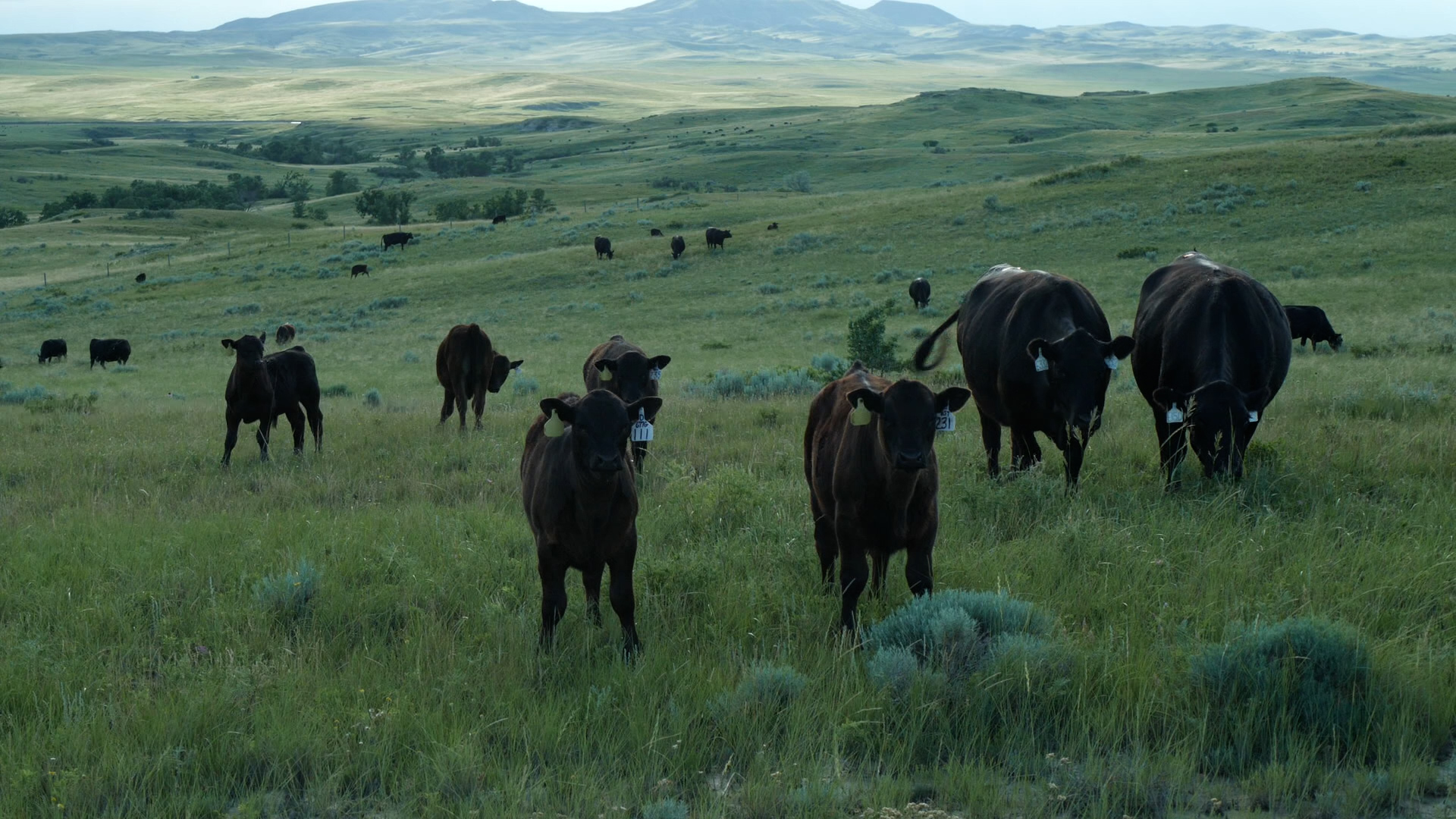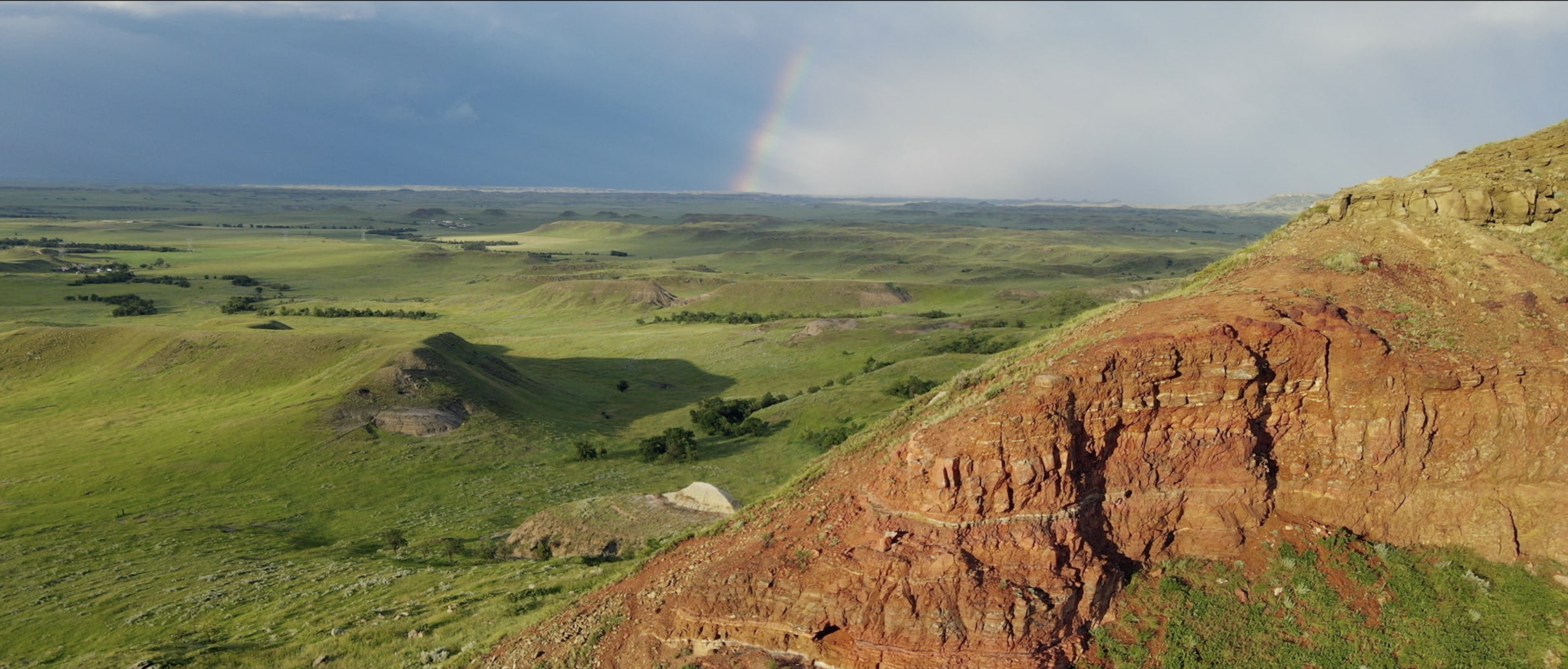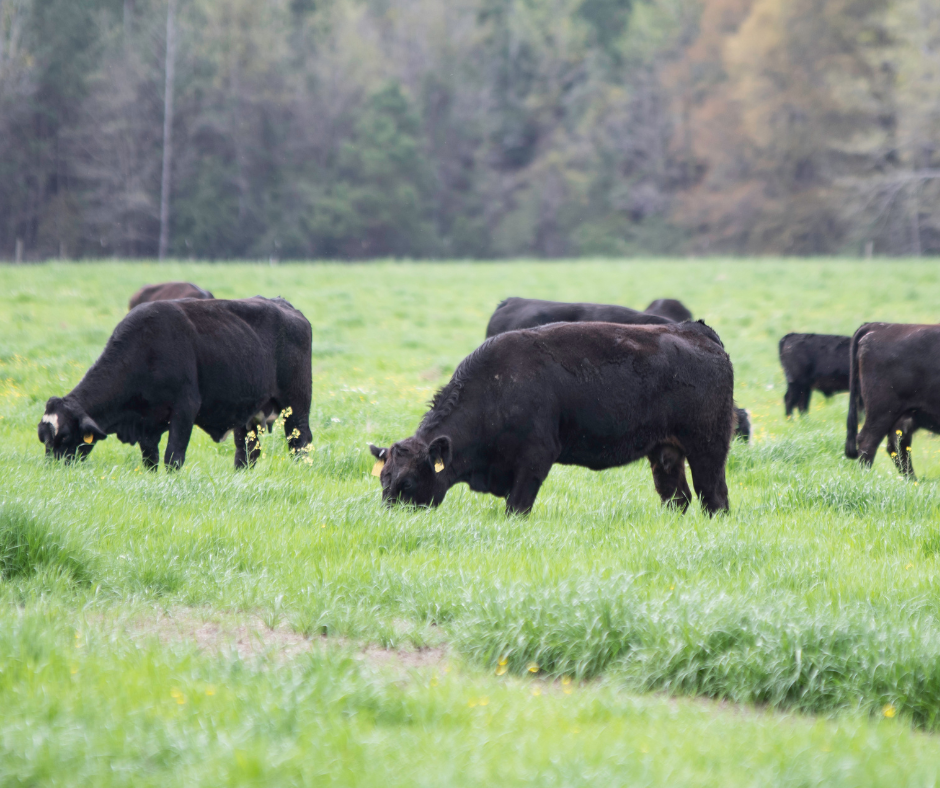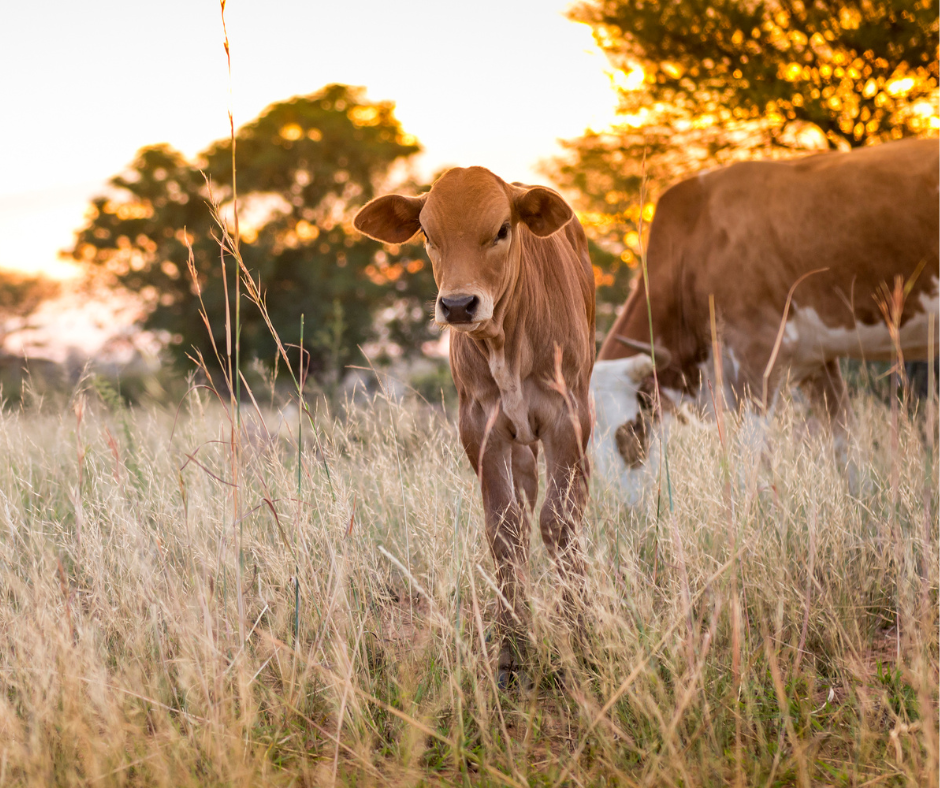by Jessie Koerner
Share
Share

Nature-based carbon solutions in continental climates
Carbon sequestration is an important strategy for mitigating the impact of climate change by reducing the amount of carbon dioxide in the atmosphere. Two potential strategies for carbon sequestration are grassland and forestry management, which can effectively sequester carbon in continental climates like the North American Upper Great Plains and Mongolia.
In terms of grassland and rangeland management, it is essential to ensure the grass is maintained and protected from disturbances like mowing or fire, and to establish improved grazing management to maintain carbon levels in the soil. The improved management of ruminants enhances sequestration and the health of the animal. This allows for carbon to be stored in the root systems and soil, rather than being released into the atmosphere. Studies have indicated that Grasslands may be able to sequester up to 1.6 metric tons of carbon dioxide (mt CO2e) per hectare annually, with the most stable sequestration rates being in regions with a dry climate. On average in the USA, scientists estimate that grasslands sequester 0.2-0.35 metric tons CO2e per hectare annually. On 110M hectares, this equates to 22-39M metric tons CO2e sequestered annually.
Forestry management involves the management of forests to increase the amount of carbon stored in trees, soil, and forest products. Forests can sequester large amounts of carbon dioxide, with estimates indicating that forests in the United States absorb around 13% of the country’s carbon dioxide emissions each year. The sequestration rate of forestry management is dependent on various factors such as the location, type of trees, age, and climate. It is generally thought that the rate of carbon sequestration increases as the forest matures, with rates plateauing at around 30-50 years, followed by net decay in some climates. 65 to 75% of carbon is above ground, and in temperate climates the rate of carbon sequestration ranges between 0.2 to 1.2 metric tons CO2 per hectare annually in the first twenty years.
In terms of comparing the two methods, grassland carbon sequestration has several benefits. Grasslands are relatively easy to establish and maintain, requiring minimal inputs like fertilizer or irrigation. Additionally, grasslands provide multiple ecosystem services, including providing habitats for wildlife, protecting soil from erosion, improved ruminant health, improved food nutritional value, reduction in water consumption, reducing the risk of flooding, and other project specific co-benefits. However, it is also essential to note that grasslands’ sequestration rates may be limited by the amount of available land for grassland management – not a problem in Mongolia.
On the other hand, forestry management may have the potential to sequester more carbon dioxide over the long term. It is also possible to use wood products as a means of carbon storage, reducing the amount of carbon dioxide emitted during the production of other materials like concrete and steel. However, forestry management requires significant investment in terms of time, effort, and resources, and it may take several decades before carbon sequestration reaches its maximum potential.
In conclusion, both grassland and forestry management can be effective strategies for carbon sequestration in continental climates like the North American Upper Great Plains and Mongolia. However, grassland management may be more advantageous because of the number of ruminants, the improved food nutritional value, the improved animal health, and the available land in Mongolia. Ultimately, the best approach will depend on the specific goals, available resources, and context of the region in question.
Forest carbon sequestration risks
Forest carbon sequestration, also known as afforestation or reforestation, has been proposed as a method to mitigate climate change by removing carbon dioxide from the atmosphere and storing it in trees and soil. While this approach can have many benefits, such as improving biodiversity and reducing erosion, there are also several risks associated with forest carbon sequestration projects.
One significant risk is the potential for carbon leakage, which occurs when the carbon sequestered in one area is offset by increased emissions in another area. For example, if a forest carbon project leads to the displacement of agriculture or logging activities to a nearby area, the carbon emissions from those activities could offset the carbon sequestered by the forest.
Another risk is the potential for reversal, where the carbon stored in the trees and soil is released back into the atmosphere due to natural disasters, forest fires, or other factors. This risk is particularly relevant for forests located in areas prone to drought, wildfires, or pests and diseases. In California, for example, it has not been possible to mitigate risk of leakage in the development of forest carbon credits due to wildfires and pest infestation.
There have also been cases of fraudulent or poorly designed forest carbon sequestration projects. For example, the Indonesian Rimba Raya project, which claimed to prevent deforestation and preserve carbon-rich peatlands, was found to have significant issues with accounting, monitoring, and verification of carbon credits. Similarly, the REDD+ project in Peru faced criticism for being implemented without proper consultation with local communities and for promoting monoculture plantations instead of natural forest regeneration.
Recently, independent investigations into the carbon registry Verra have revealed that more than 90% of rainforest carbon offsets by biggest certifier are considered “worthless.” In short, the analysts found that unmanaged reference areas sequestered the same amount of carbon as areas that were considered protected and managed in carbon credit applications.
Additionally, some experts have raised concerns about the potential negative social and environmental impacts of forest carbon sequestration projects. For example, indigenous communities may be displaced or marginalized in the process of establishing and managing forest carbon projects. Moreover, the focus on carbon sequestration may lead to the neglect of other important environmental and social issues, such as biodiversity conservation, water resource management, or poverty alleviation.
In conclusion, while forest carbon sequestration has the potential to be a valuable tool for mitigating climate change, it is not without risks. It is crucial to design and implement these projects with robust monitoring, reporting, and verification mechanisms, as well as with consideration of the social and environmental impacts on local communities and ecosystems.
Regenerative grazing: Synergy in soil carbon and food production
Grassland carbon sequestration is synergistic with food production via regenerative management, which involves using improved grazing management practices that promote healthy soils, improve biodiversity, increase ecosystem services, and healthier animals. Regenerative management practices such as rotational grazing, cover cropping, and reduced tillage increase the amount of carbon stored in the soil and reduce the amount of greenhouse gases released into the atmosphere.
Grasslands play a vital role in carbon sequestration and have the potential to store large amounts of carbon in their soils. When grasslands are managed regeneratively, the soil organic matter (SOM) content increases, which results in a higher soil carbon stock. Grasslands are also able to maintain their carbon sequestration potential over long periods of time, especially when compared to forests, which may release carbon back into the atmosphere through natural disturbances such as fires or insect outbreaks.
Regenerative management practices can also improve food production by increasing soil fertility and reducing the need for chemical fertilizers and pesticides. These practices can help maintain healthy soil structure and composition, enhance soil water-holding capacity, and improve nutrient cycling, which can lead to increased crop yields and quality. Additionally, regenerative management practices can enhance the resilience of food production systems to extreme weather events, such as droughts or floods, which are expected to become more frequent with climate change.
In summary, grassland carbon sequestration through regenerative management practices can offer a number of benefits that are synergistic with food production, including improved soil health, increased carbon storage, and enhanced resilience to climate change. By promoting regenerative management practices, it may be possible to achieve both climate and food security goals simultaneously, while alleviating poverty and improving quality of life.
Principles of regenerative grazing
Regenerative grazing is a management practice that aims to improve soil health, increase biodiversity, and enhance carbon sequestration through the strategic use of grazing animals. The principles of regenerative grazing include:
- Holistic management: This approach involves the integration of social, environmental, and economic considerations in decision-making. Holistic management recognizes that ecological systems are complex and interconnected, and that management decisions should be made with the whole system in mind.
- Adaptive multi-paddock (AMP) grazing: This involves the rotation of livestock through multiple paddocks, allowing for rest and recovery of grazed areas. This approach helps to prevent overgrazing, improves soil health, and encourages the growth of diverse plant species.
- Animal impact: Livestock are used to trample, graze, and fertilize the land, promoting soil health and nutrient cycling. The impact of grazing animals on the land can be beneficial when managed properly.
- Diversity: Encouraging a diversity of plant and animal species can improve ecosystem health and resilience. Regenerative grazing often involves the introduction of native grasses and other plants, which can help to improve soil health and support wildlife.
- Soil health: Soil health is a key focus of regenerative grazing, as healthy soils are essential for supporting healthy plant growth and carbon sequestration. Practices that promote soil health include reducing tillage, minimizing the use of chemicals, and increasing soil organic matter.
- Collaboration: Regenerative grazing involves collaboration between farmers, ranchers, and other stakeholders to share knowledge, resources, and best practices. This collaboration can help to build stronger, more resilient communities and promote sustainable land use practices.
EcoBalance Global scaling advantage
Satellite, AI technologies, and advanced data management will help scale soil carbon and grassland measurement, verification and reporting by providing accurate and timely information on large areas of land. EcoBalance believes that it is essential to collect and make available as much data as possible to ensure transparency and demonstrate the scientific rigor used in our framework.
Satellite remote sensing can capture data on vegetation cover, soil moisture, and other environmental factors, which can be used to monitor the health and productivity of grasslands. Advanced sensors, such as hyperspectral and radar sensors, can even indicate changes in soil carbon levels. These data can be processed using machine learning algorithms to develop models that predict changes in soil carbon levels over time.
AI algorithms can help analyze large volumes of data, including satellite imagery and field measurements, to identify patterns and anomalies that may indicate changes in grassland health. For example, machine learning algorithms can be trained to detect changes in vegetation cover, which can be used to estimate biomass production and soil carbon levels.
Furthermore, mobile apps and other technologies can be used by farmers and ranchers to collect data on soil carbon levels and other environmental variables. These data can be integrated with satellite data to create more accurate models of soil carbon sequestration and grassland productivity.
By combining satellite and AI technologies with on-the-ground monitoring, we can gain a better understanding of the health and productivity of grasslands, as well as the potential for soil carbon sequestration. This can help inform decision-making around regenerative grazing practices, carbon markets, and other initiatives aimed at promoting sustainable land use.
Our technical teams have already begun utilizing this technology to optimize soil sampling and create tools for ranchers and management advisors to improve grazing plans in the United States. We also track cattle records and carbon records without the risk of double-counting using our enterprise-scale blockchain platform to create a brick-house program rather than a house of cards like many nature-based carbon sequestration projects before.
At EcoBalance Global, we are utilizing advanced database technology and blockchain to ensure high confidence in our methodology. Based on our years of experience managing carbon offsets and green energy, we understand that traceability and transparency are required to provide high quality carbon offsets and co-benefits.
References
(1) Bai, Y.; Cotrufo, M. F. Grassland Soil Carbon Sequestration: Current Understanding, Challenges, and Solutions. Science 2022, 377 (6606), 603–608. https://doi.org/10.1126/science.abo2380.
(2) US EPA, O. Sources of Greenhouse Gas Emissions. https://www.epa.gov/ghgemissions/sources-greenhouse-gas-emissions (accessed 2023-04-12).
(3) Carbon sequestered and stored in young versus old forests in the Adirondacks. https://www.adirondackcouncil.org/page/blog-139/news/carbon-sequestered-and-stored-in-young-versus-old-forests-in-the-adirondacks-1533.html (accessed 2023-04-12).
(4) Bernal, B.; Murray, L. T.; Pearson, T. R. H. Global Carbon Dioxide Removal Rates from Forest Landscape Restoration Activities. Carbon Balance Manag. 2018, 13 (1), 22. https://doi.org/10.1186/s13021-018-0110-8.
(5) L, J. California Forest Carbon Buffer Pool is Not Enough. Carbon Credits. https://carboncredits.com/california-forest-carbon-buffer-pool/ (accessed 2023-04-12).
(6) Emont, J. New Restrictions Could Cut Carbon Offsets From Major Rainforests. Wall Street Journal. May 15, 2022. https://www.wsj.com/articles/new-restrictions-could-cut-carbon-offsets-from-major-rainforests-11652540472 (accessed 2023-04-12).
(7) The U.N.’s grand plan to save forests hasn’t worked, but some still believe it can. Mongabay Environmental News. https://news.mongabay.com/2020/07/u-n-s-grand-plan-to-save-forests-hasnt-worked-but-some-still-believe-it-can/ (accessed 2023-04-12).
(8) Greenfield, P. Revealed: More than 90% of Rainforest Carbon Offsets by Biggest Certifier Are Worthless, Analysis Shows. The Guardian. January 18, 2023. https://www.theguardian.com/environment/2023/jan/18/revealed-forest-carbon-offsets-biggest-provider-worthless-verra-aoe (accessed 2023-04-12).
(9) Suiseeya, K. R. M. Contesting Justice in Global Forest Governance: The Promises and Pitfalls of REDD+. Conserv. Soc. 2017, 15 (2), 189–200.
(10) 4 principles for how carbon gets into the soil. AGDAILY. https://www.agdaily.com/insights/understanding-how-carbon-gets-into-the-soil/ (accessed 2023-04-12).
(11) Dass, P.; Houlton, B. Z.; Wang, Y.; Warlind, D. Grasslands May Be More Reliable Carbon Sinks than Forests in California. Environ. Res. Lett. 2018, 13 (7), 074027. https://doi.org/10.1088/1748-9326/aacb39.
(12) Nichols, K.; Omondi, E.; Smith, A.; Moyer, J. GLOBAL SYMPOSIUM ON SOIL ORGANIC CARBON, Rome, Italy, 21-23 March 2017 Regenerative Organic Farm Management Practices Mitigate Agro-Ecosystem Vulnerability to Climate Change by Sequestering Carbon and Building Resilience.
(13) Egoh, B. N.; Bengtsson, J.; Lindborg, R.; Bullock, J. M.; Dixon, A. P.; Rouget, M. The Importance of Grasslands in Providing Ecosystem Services: Opportunities for Poverty Alleviation. In Routledge Handbook of Ecosystem Services; Routledge, 2016.




